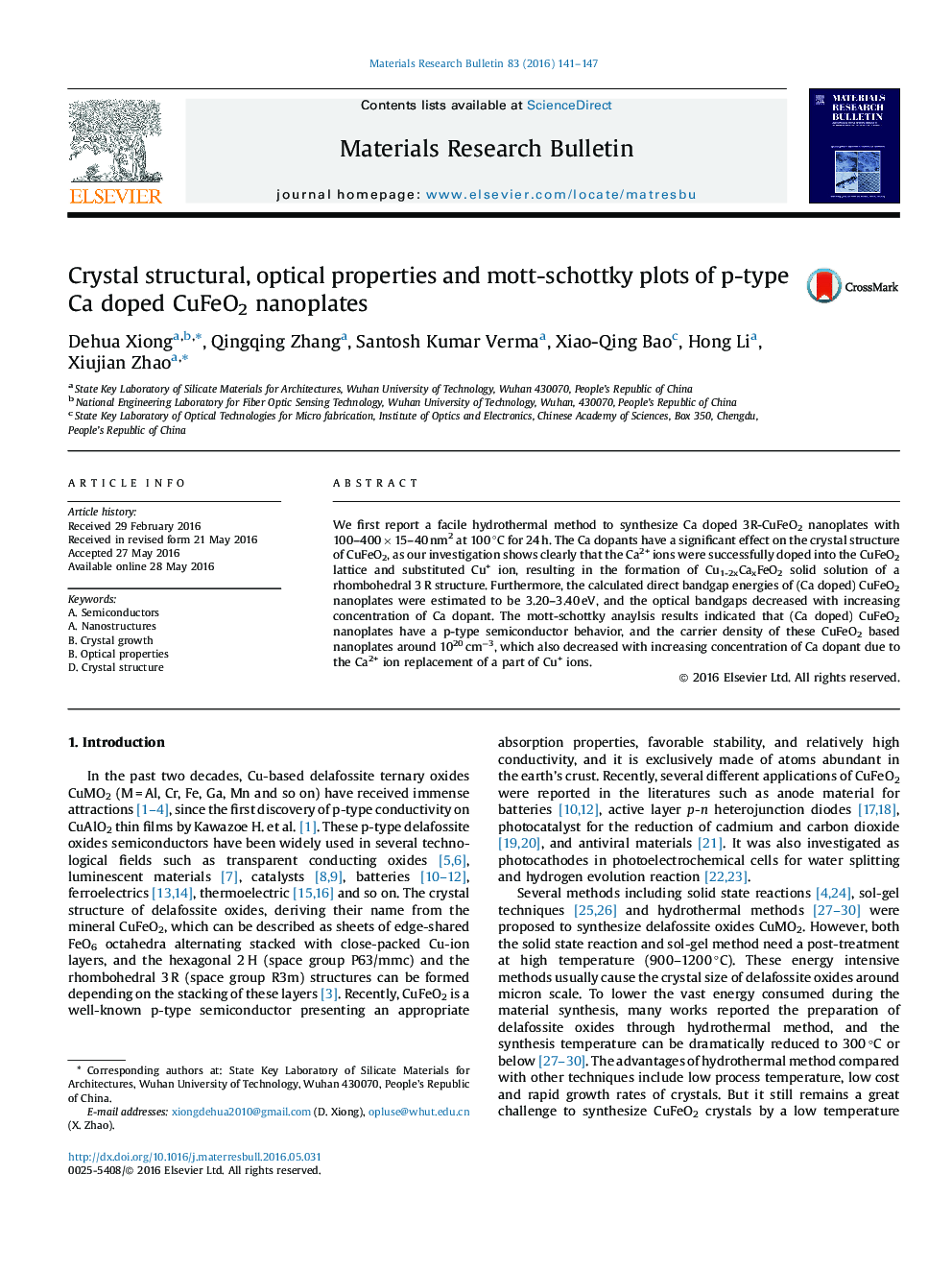| Article ID | Journal | Published Year | Pages | File Type |
|---|---|---|---|---|
| 1487016 | Materials Research Bulletin | 2016 | 7 Pages |
•Ca doped 3R-CuFeO2 nanoplates were obtained through hydrothermal method at 100 °C.•Ca 2+ was doped into CuFeO2 lattice and 3R-Cu1-2xCaxFeO2 solid solution was obtained.•The calculated direct bandgap of (Ca doped) CuFeO2 nanoplates were about 3.20–3.40 eV.•Ca doped CuFeO2 is a p-type semiconductor, the carrier density is around 1020 cm−3.
We first report a facile hydrothermal method to synthesize Ca doped 3R-CuFeO2 nanoplates with 100–400 × 15–40 nm2 at 100 °C for 24 h. The Ca dopants have a significant effect on the crystal structure of CuFeO2, as our investigation shows clearly that the Ca2+ ions were successfully doped into the CuFeO2 lattice and substituted Cu+ ion, resulting in the formation of Cu1-2xCaxFeO2 solid solution of a rhombohedral 3 R structure. Furthermore, the calculated direct bandgap energies of (Ca doped) CuFeO2 nanoplates were estimated to be 3.20–3.40 eV, and the optical bandgaps decreased with increasing concentration of Ca dopant. The mott-schottky anaylsis results indicated that (Ca doped) CuFeO2 nanoplates have a p-type semiconductor behavior, and the carrier density of these CuFeO2 based nanoplates around 1020 cm−3, which also decreased with increasing concentration of Ca dopant due to the Ca2+ ion replacement of a part of Cu+ ions.
Graphical abstractFigure optionsDownload full-size imageDownload as PowerPoint slide
